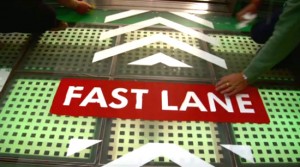Branding and messaging to employees is just as critical, if not more so, than what you put into the public sector. Employees are your biggest brand ambassadors, so are you treating them like one?
Here’s an example: An organization sends out a communication via postal mail to it’s employees. The individuals did not allow themselves the time to wait a week to get proper business papers ordered so that the employees would receive a nice, crisp and properly branded piece in the mail from the organization they work for. Instead, what the employees received was a mishmash of mixed envelopes, letter head and a poorly written letter. Basically putting time before brand and message.
It makes one wonder how the employees must have felt when they got a communication from their employer that basically looked like it had been put together by a group of third-grade students but yet see that their branding to outside consumers is very sharp and thought provoking. It’s rather disrespectful to the intelligence of the employee. This happens every day in thousands of organizations.
Employees are your biggest brand ambassadors. Think about it, they have chosen to come to your business five days a week, spend an average of 8 to 10 hours per day focused on selling, promoting, using and living amongst your product and or service. Every one of their friends, families and neighbors knows what they do for a living, where they go everyday. When they meet someone new, one of the first questions asked is, “Where do you work?” or “What do you do for a living?”
Well…here’s two possible responses:
An employee that knows and understands the brand, culture and message:
“I work at ABC company. We specialize in providing an exceptional multidimensional experience for our customers that are fortunate enough to use our product line. You should check it out. Yeah, we rock.”
or
An employee that has no concept of the brand, culture and message:
“I work at ABC company but to be honest, it sucks and I’m looking for another job. Will you keep your ears open for me if you hear of anything? Hey, where’s the beer? I thought there was going to be beer here?”
Don’t think your employees don’t notice when you’re not treating or talking to them the same as your consumers (that’s a triple negative hat-trick by the way). They know it and the way they act towards your customers while at work and out in the real world after work dictates how entrenched they are in your culture, brand and message.
Here’s the takeaway:
Go up to five of your employees individually and ask them what is the sole purpose of the company and why does the company exist (answering “to make money” or “to make a product” doesn’t count). If you get five different answers, you have work to do internally. Basically, every employee should be able to tell you the same thing when you ask them this question. It’s called a “brand mantra,” something that is a mind-set and not written in an employee manual. The employees at Nike, Starbucks, Patagonia, Disney, the Ritz Carlton and every other major brand in the world gets it. If you’re getting different answers then you need to turn your branding, messaging and marketing efforts inward. Don’t spend a dime selling the dream on the street if you’re delivering a nightmare on the inside.
Want your brand to shine? It starts with shinny happy employees that are 100% committed and treated like they are the most important part of the brand. Get busy homies. You’ve got work to do!



